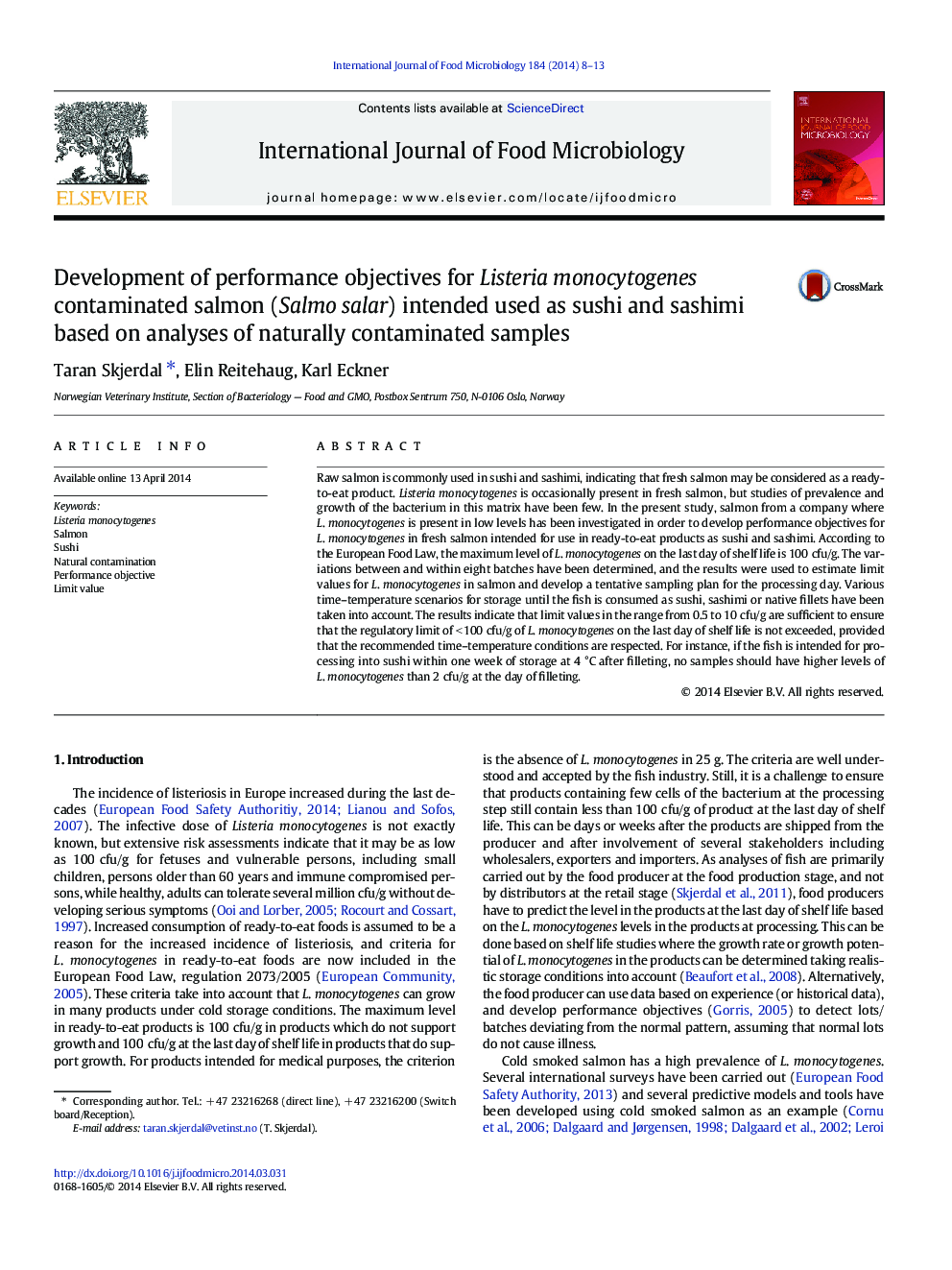| کد مقاله | کد نشریه | سال انتشار | مقاله انگلیسی | نسخه تمام متن |
|---|---|---|---|---|
| 4366868 | 1616599 | 2014 | 6 صفحه PDF | دانلود رایگان |

• L. monocytogenes prevalence and levels vary largely in naturally contaminated salmon.
• Fresh salmon support rapid growth of L. monocytogenes but sushi does not, probably due to the acidified rice.
• Salmon should have maximum levels 0.5–10 cfu/g L. monocytogenes at processing if intended used raw.
• More sensitive methods for analyses of large or pooled samples are needed.
Raw salmon is commonly used in sushi and sashimi, indicating that fresh salmon may be considered as a ready-to-eat product. Listeria monocytogenes is occasionally present in fresh salmon, but studies of prevalence and growth of the bacterium in this matrix have been few. In the present study, salmon from a company where L. monocytogenes is present in low levels has been investigated in order to develop performance objectives for L. monocytogenes in fresh salmon intended for use in ready-to-eat products as sushi and sashimi. According to the European Food Law, the maximum level of L. monocytogenes on the last day of shelf life is 100 cfu/g. The variations between and within eight batches have been determined, and the results were used to estimate limit values for L. monocytogenes in salmon and develop a tentative sampling plan for the processing day. Various time–temperature scenarios for storage until the fish is consumed as sushi, sashimi or native fillets have been taken into account. The results indicate that limit values in the range from 0.5 to 10 cfu/g are sufficient to ensure that the regulatory limit of < 100 cfu/g of L. monocytogenes on the last day of shelf life is not exceeded, provided that the recommended time–temperature conditions are respected. For instance, if the fish is intended for processing into sushi within one week of storage at 4 °C after filleting, no samples should have higher levels of L. monocytogenes than 2 cfu/g at the day of filleting.
Journal: International Journal of Food Microbiology - Volume 184, 1 August 2014, Pages 8–13